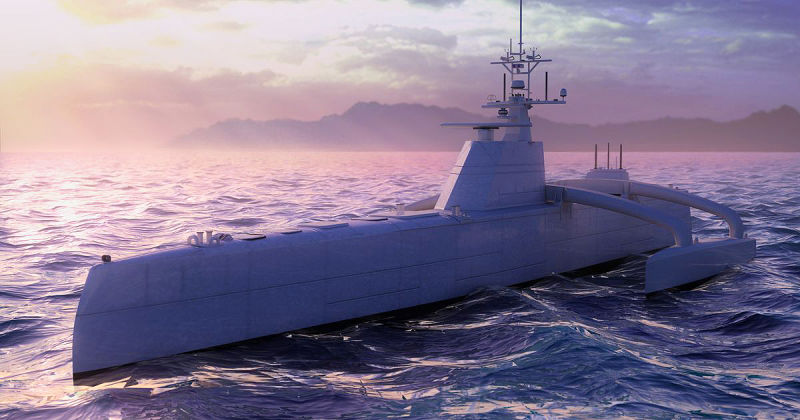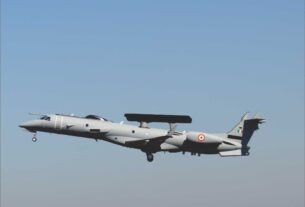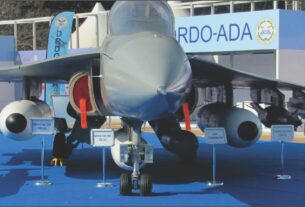Sonar technology may change naval warfare
Sonar technology is playing a vital role in modern naval warfare as it can detect objects underwater in a faraway location when it is totally or partially merged into hundreds of deep on the sea floor. And this can provide vital access to a greater situational awareness.
“Sensors to us are not just the interface with a hydrophone, transducer, etc., but also the human interface,” explains Pete Scala, PEO-IWS5’s director of advanced development undersea-sensors.
“Improving sensors is the most expensive because you’re building hardware. Larger arrays allow for narrower beams, which makes it more accurate to locate items and reject noise. In addition to towed arrays, we have to develop technologies that can help us separate the array on the ship from the ship’s own noise.
“That is more difficult with a surface ship because they have a lot of noise associated with the air/water interface. Submarines are not easy,” Scala says.
“Because we are down deep, we’re in the field with the energy a lot more than the surface guys and sub arrays are more sensitive than surface arrays. First, because we can be and, second, because we have built submarines for years and years to be as quiet as possible, while only in recent years they have tried to get surface ships quieter.”
Diesel submarines are generally more difficult to detect than nuclear-powered boats because they spend most of their submerged operations running on batteries while nuclear reactors are noisy and always in operation. That is especially true of new-generation diesels that can stay submerged for as long as two weeks using fuel cells.
“In the last 15 years or so, we have completely revolutionized how we do signal processing on subs and surface ships. Since 1998, we also have used acoustic rapid COTS insertion rather than developing our own MILSPEC stuff. In addition, we develop a new hardware build every couple of years to manage obsolescence as a technology insertion,” Scala adds.
“On alternate years, we develop complementary software, which involves lots of tricks to reduce noise, make it more intuitive to operators and increase automation so the operator can spend more time analyzing what he’s seeing. So automation and human interface are areas where we have made huge progress.”
The US fleet of nuclear-powered ballistic submarines has dropped from 41 at the height of the Cold War to only 14 today. At the same time, the subsurface Navy is facing a rising challenge from China, which is moving from regional power to Pacific (and potentially global) superpower status.
At the same time, Russia announced plans to rebuild the naval capability once deployed by the Soviet Union, including a rebuilt submarine fleet based in the near-term around the Akula II-class of modern fast attack submarines, but moving into more advanced technologies and capabilities with the new Yasen-class.
With the growth of quieter, longer range new-generation submarines within the world’s top navies, the growing development by potential adversaries-including Iran and North Korea-of anti-surface ship missiles and tactics and the expansion of undersea anti-access, area-denial (A2/AD) efforts, continuously improved ASW capabilities have become critical factors in US military planning and deployment.
“We need to be ready for Russia, China, Iran, or whoever else who seeks to develop an A2/AD-like network underwater to match what many of them currently have on the surface and in the air. We know that is going to happen,” warned Vice Adm. Michael J. Connor, triple-hatted as commander of US Submarine Forces (COMSUBFOR), Submarine Forces Atlantic (COMSUBLANT) and the Allied Submarine Command.
The US Navy plans to begin construction of a new-generation of Ohio-class, nuclear-armed ballistic missile submarines by 2021 called the Ohio Replacement program, Connor added.
In addition, the Virginia-class and its anticipated mid-century replacement, the SSN(X), are scheduled to receive extremely long-range networked weapons, possibly including a prototype torpedo with a range of more than 200 nautical miles.
The network interface would enable targeting data for a torpedo launched by the sub to come from another platform, including aircraft such as the Boeing P-8 Poseidon or UAVs.
“We have been making efforts to develop new sensors, but starting in the 1990s with submarines and now on surface ships we’ve been significantly improving processing,” Harrison says.
“That is called Advanced Processing Build on subs and Advanced Capability Build on surface ships. In 2009, on the surface side, in addition to MFTA, we lifted the processing capability developed for submarines, put it on surface ships and changed their old technology to state-of-the-art-a huge game-changer.
“We have seen several new developments in sensors, such as the large aperture bow array (which went to sea on its first sub, the USS North Dakota), MFTA on surface ships, a new towed array that has the same functionality but is more reliable (Compact Towed Array), and a high-frequency sonar; the higher the frequency, the smaller the sensors and array. That allows subs to see behind them, which is called the Low-Cost Conformal Array, with some of the processing embedded with the hundreds of sensors in the array.”
Single crystal hydrophones and transducers have been in development for a number of years, providing greater efficiency with smaller size and less heat, but Harrison says they also are expensive and currently suffer from a high rejection rate due to flaws, “so that is probably 5-to-10 years from fielding.”
Another area of development is vector (directional) sensors, where the sensor only hears from a certain direction, which helps reduce noise.
“Those will probably be in both surface and submarine towed and conformal arrays in another five years.”
Scala adds that while the US has an advantage over potential adversaries, “they are spending a lot of money to improve their submarines and ASW capabilities. There was a time when we were resting on our laurels. Today, we are working hard to maintain our competitive edge.
“A North Korean sub sank a South Korean warship a couple years ago, which pointed out the importance of ASW to Navy surface ships, so they can detect a torpedo in time to do something about it. We are not trying to look like a whale on subs-we’re trying to not look like anything. On surface ships, DDG1000 is the major effort to reduce the signal profile.”
The US also is expanding ASW surface and aviation capabilities. To meet expanded foreign submarine operations and UUV technological advancements, the US surface naval force employs state-of-the-art ASW technology aboard numerous Arleigh Burke-class destroyers. The SQQ-89A(V)15 Combat System, which will be aboard 64 destroyers by 2020, and the new MFTA are game-changers in ASW operations.
The combined capabilities alter how the surface Navy searches and tracks submarines. With enhanced sensor capability and data processing, the surface naval forces have an increased role in integrated ASW operations. ASW surface ships can remain longer on station in comparison to aircraft and provide real-time command and control capability beyond that of a submarine.
In stride with the surface Navy’s technological advancements, the aviation community has new platforms to meet the ASW mission. The MH-60R Sea Hawk helicopter and P-8A Poseidon aircraft are to be fully integrated in the fleet by 2020 and are already providing an improved ASW capability in fleet operations.
The rotary aircraft has an enhanced active dipping sonar to increase detection ranges from three to seven times compared to legacy systems.
The P-8A adds an improved sensor search capability by utilizing a multi-static active coherent (MAC) system, which comprises sonobuoys (source and receiver) and advanced processing.
In addition to the new platforms and technological advancements, all ASW ships and aircraft in the future will employ the Mk 54 lightweight torpedo, which integrates several years of weapons technology.
By 2020, these new improvements collectively in the surface and aviation communities will create a powerful ASW capability. The Navy must further improve requisite training to meet the new capabilities and foster a fleetwide culture that prioritizes the ASW mission.
Meanwhile, the US Defense Advanced Research Projects Agency (DARPA) has been pursuing two ASW programs: Distributed Agile Submarine Hunting (DASH) and ASW Continuous Trail Unmanned Vessel (ACTUV).
DASH was designed to reverse the asymmetric advantage of the threat from quiet new submarines through the development of advanced standoff sensing from unmanned systems.
“The goal is not only to show we can address the most challenging problem in ASW, but that we can do so with systems that are scalable and affordable,” DARPA Program Manager Andy Coon says.
“A single deep-sea node provides a field-of-view with significant coverage, allowing a limited number of nodes to scale to large areas. Within the trade space of deep ocean sonar, we need to get creative to achieve affordable hardware and operations. We purposely have avoided increasing the size and complexity of arrays. This is a gamble, but the potential payoff will be high.”
ACTUV involves development of an unmanned vessel optimized to track quiet diesel electric submarines.
“Key features and technology for the vessel includes advanced software, robust autonomy for safe operations in accordance with maritime laws and innovative sensors to continuously track the quietest of submarine targets,” says Scott Littlefield, DARPA program manager.
“China has centered its new-and-improved PLA Navy mainly on diesel-electric attack boats, importing some and building its own, while also experimenting with nukes,” US Naval War College professor of strategy James R Holmes, a specialist in US, Chinese and Indian maritime strategy, said recently.
In the past quarter century, China has grown from a primarily littoral, regionally focused navy to a rapidly growing blue-water force, including Jin-class Type 094 ballistic submarines with JL-2 nuclear intercontinental ballistic missiles (ICBMs).
The Chinese navy now has the ability to meet a wide range of missions, including being “increasingly capable of striking targets hundreds of miles from the Chinese mainland.” They also are practicing operations off the shores of China’s neighbors.
The JL-2 missile has a range of 4,000 nautical miles, enabling “the Jin to strike Hawaii, Alaska, and possibly western portions of the continental US from East Asian waters.
The Chinese underwater fleet comprises five nuclear attack submarines, four nuclear ballistic missile submarines, and 53 diesel attack submarines-and is growing.
The type-095 guided missile attack submarine, which China will likely construct over the next decade, may be equipped with a land-attack capability. It can o strike American bases throughout the Pacific.
All this has made China a growing target of ASW/USW (undersea warfare) development/deployment by a host of potential adversaries, from the US to Vietnam.
The sheer volume of the submarine challenge facing PLAN for the foreseeable future has led the Chinese to explore new, cheaper, more inclusive ASW technologies.
Beijing “has deployed fixed ocean-floor acoustic arrays off its coasts, presumably with the intent to monitor foreign submarine activities in the near seas.”
China is following the path of the former Soviet Union’s evolution from a littoral to blue-water navy with respect to ASW, which is considered more important to expeditionary than A2/AD deployments.
As a US Navy vice admiral once said “You do not build a blue-water navy to protect your own coasts, you build it to force someone else to protect theirs.”
What is happening in the Asia/Pacific is an action-reaction-counteraction-repeat scenario, not unlike the land force armor/anti-armor history of technological one-upmanship. While ASW has risen in importance within PLAN, Chinese strategy-at least in the near-term-appears more focused on A2/AD.
“Both China and North Korea have a large underwater warfare capability with their submarine forces,” Swanson says. “Our systems were not built specifically around a certain country or threat, but as an overall capability for both blue-water and littoral areas, so you have more flexibility.”
The expanding numbers and capabilities of PLAN submarines and big ships are, in part, reflective of its concern about a potential future conflict in which American, Japanese, Australian, Indian, or other submarines might want to sink them.
That has led to a growing commitment of Chinese money and R&D to developing ASW, which has been one of the biggest holes in Chinese military capability.
In recent years, that has included deploying the Type 056 Corvette, Y-8 maritime patrol aircraft, and fixed underwater acoustic sensors.
According to reports on China’s major maritime requirements, one near-term project may be a long-range ASW surface warship, intended to reduce the foreign threat to its growing fleet of aircraft carriers, cruisers, and amphibious warships- a concern shared by the US and every other maritime nation.
Rear Adm. Dave Johnson, Naval Sea Systems Command’s PEO-Submarines, keeps a model of the new Russian nuclear guided missile submarine (SSGN) Severodvinsk where he can see it every day at work.
“We’ll be facing tough potential opponents; one only has to look at the Severodvinsk. I am so impressed with this ship that I had Carderock build a model from unclassified data,” he admitted during the Navy Submarine League symposium, referring to NAVSEA’s center of excellence for ships and ship systems. “The rest of the world’s undersea capability never stands still.”
Construction on the Yasen-class Severodvinsk began in 1993, leveraging Soviet technology from the previous two decades to build a successor to the Akula-class to compete with the US Seawolf- and Virginia-class nuclear-powered subs.
The post-Soviet Russian economy could not support sustained development of a new submarine, delaying its sea trials until late 2011 and becoming operational until early 2014.
Despite its fractured two-decade development, the highly automated 13,800-ton, 390-foot long vessel is considered Russia’s most capable attack submarine.
With a reduced crew size, it is by far the quietest of Russian subs, capable of “silent” speeds up to about 20 knots, although some reports suggest the Severodvinsk might have a maximum speed of 35 to 40 knots.
Even with its advanced technology, the Yasen-class is still noisier than the US Navy’s newer Seawolf and Virginia classes.
Russia has two of seven more planned Yasen-class boats under construction, although when the full complement will become operational remains unknown. Russia is primarily an ASW/USW target with numerically, if not technologically, limited deployable ASW capabilities of its own.
In the coming decades, the USmust deal with a rapid proliferation of new-technology submarines, USW capabilities, and ASW challenges in its new focus area: the vast land and ocean masses of the Asia/Pacific.
“To guard their interests-against China, in particular-smaller Asian powers have taken to constructing or importing undersea flotillas. Japan deploys some of the most impressive diesel boats in the world. Vietnam has taken delivery of Russian-built Kilos, while more are on the way,” Holmes wrote.
“Taiwan wants to build submarines at indigenous shipyards. Indonesia and Bangladesh voiced interest in purchasing boats abroad. India and Australia are trying to get their submarine programs on track. And on and on.”
China has territorial and political conflicts with nearly all its neighbors, but the growing number of submarines and surface warships (Chinese, US, Japanese, etc.) crowding the waters of that region raise new issues for everyone’s ASW effort.
They must not only locate, identify, and track potential adversaries, but also be sufficiently advanced to discriminate allied or non-adversarial vessels.
A major “passive” counter-ASW modality for the US Navy is its submarine fleet patrolling two oceans (Pacific and Indian) that comprise half the surface of the Earth.
According to the Navy, no nation has the resources to build enough ASW platforms to find those subs in the open ocean.
Even within 200 miles of a foreign coast, America’s new- and next-generation subs, built with stealth shaping, materials, and noise reduction, will be more difficult to detect.
While the US Navy develops the Undersea Dominance Campaign Plan, the competition for use of the undersea domain is critical as China, Russia, and many others invest heavily in undersea technology, diminishing the asymmetric advantage the US has enjoyed since World War II.
“If you look at the sea and all its priorities, ASW is right at the top, so I would expect the Navy to continue putting an emphasis there, seeking better technologies and systems to exploit the underwater environment and improve training, which is a continual focus,” Swanson says.
Maintaining a global leadership position is vital to US naval superiority, Swanson adds. “ASW already is probably the most difficult warfare area with which the Navy must concern itself. You can’t see it, put eyes on it, there are a lot of variables. It’s a bit like playing chess, so you have to put yourself to the best advantage by putting your adversary to the greatest disadvantage. The ocean is a big medium and you have to have a way to track and localize unmanned vessels just as you do manned, which can be just as deadly to the fleet.”
Tactical ASW superiority a critical enabler to maintain forward presence and sea control and support power projection and deterrence.
The time is now for the Surface force to rededicate itself to this most central of missions. After all, the world’s most lethal power projection Navy cannot do its job if the water it operates in is threatened from below.




